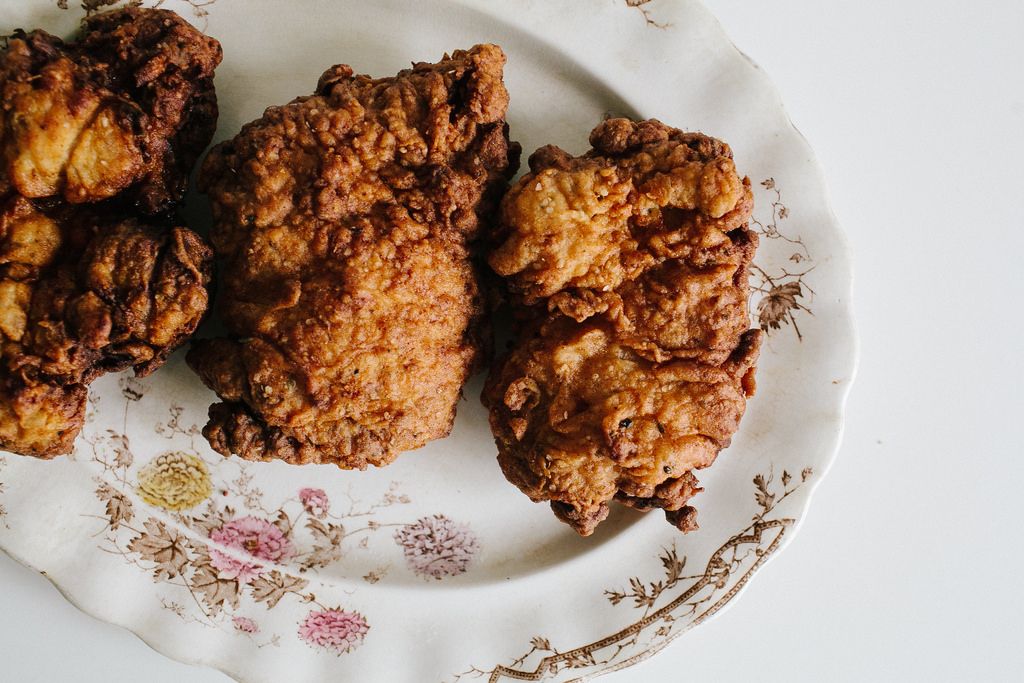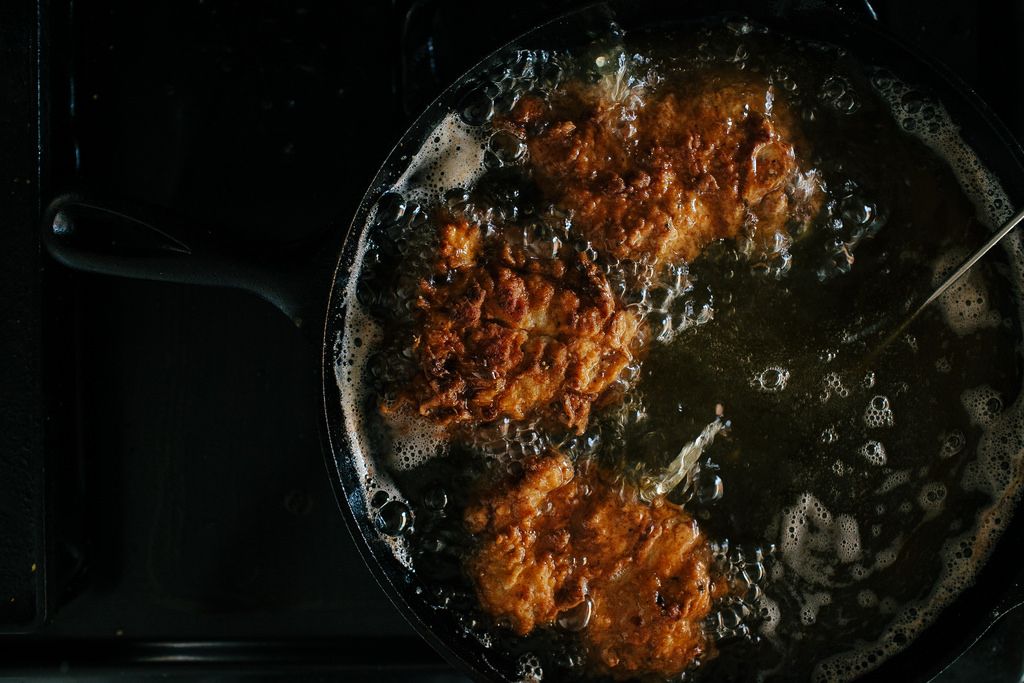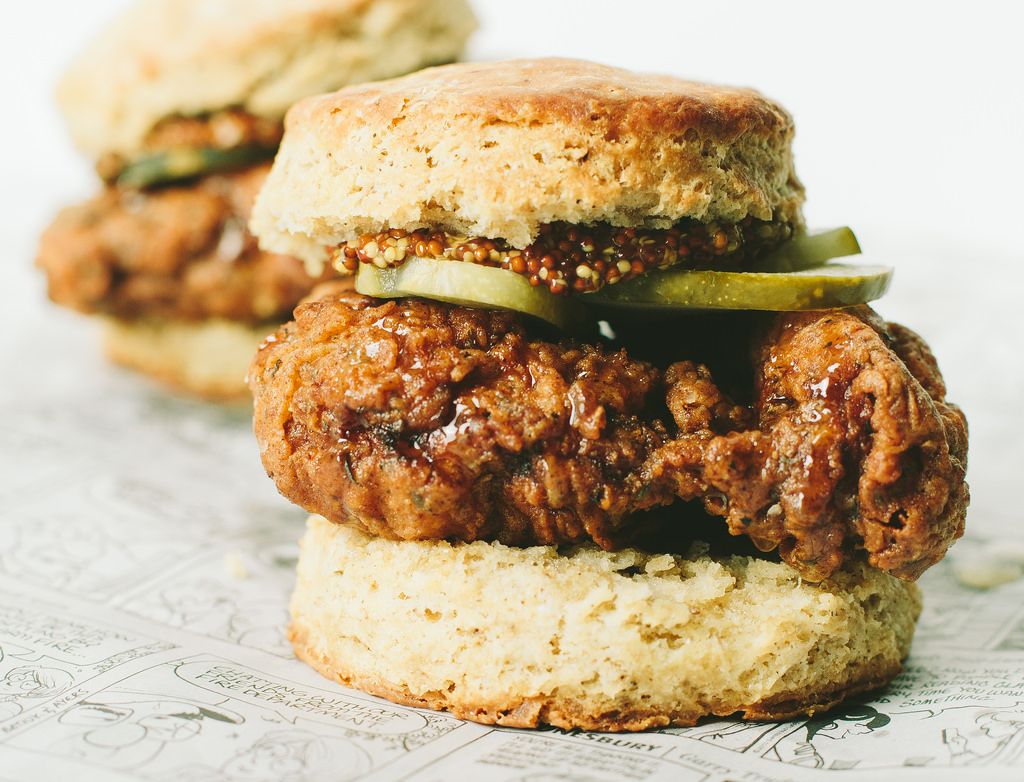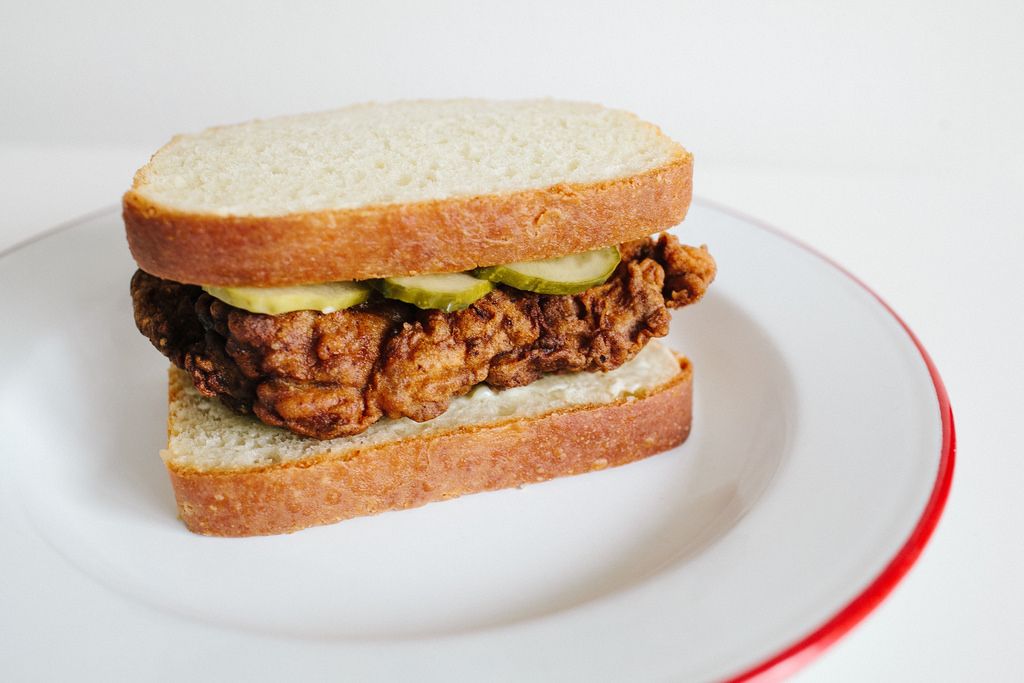
The Dynamite Chicken cookbook is here! Get ready for 60 brand-new ways to love your favorite bird. Inside this clever collection by Food52 and chef Tyler Kord, you'll find everything from lightning-quick weeknight dinners to the coziest of comfort foods.
Order NowPopular on Food52
Continue After Advertisement
13 Comments
Chris
April 8, 2015
Overall this is a great recipe however I find that there is to much oregano, thyme and marjoram resulting in more of an Italian flavor than Southern. The dredge method works fairly well but for a lighter crispier batter use two eggs and a some bread crumbs to the flour.
Stephen S.
March 26, 2015
I'm curious if the naysayers actually tried the recipe. (I'm guessing you didn't.) It's really, really good fried chicken, even if it's not the way your grandma used to make it.
Don't get me wrong - I'm all for tradition and time-tested methods; when I first read "boneless" I just about laughed off the recipe altogether. But I do love me a fried chicken sandwich and this makes a damn good fried chicken sandwich. The dry brine is a lot less fuss than a wet brine, the crust is light and airy and gorgeously crunchy, and the meat itself is moist and delicious. A little dab of mayo, a pickled green tomato and piece of lettuce and you have yourself a glorious sandwich.
I imagine if this recipe were titled differently (it is admittedly incredibly pompous, borderline insulting even), people's reactions might be a little different.
Don't get me wrong - I'm all for tradition and time-tested methods; when I first read "boneless" I just about laughed off the recipe altogether. But I do love me a fried chicken sandwich and this makes a damn good fried chicken sandwich. The dry brine is a lot less fuss than a wet brine, the crust is light and airy and gorgeously crunchy, and the meat itself is moist and delicious. A little dab of mayo, a pickled green tomato and piece of lettuce and you have yourself a glorious sandwich.
I imagine if this recipe were titled differently (it is admittedly incredibly pompous, borderline insulting even), people's reactions might be a little different.
calangus
March 24, 2015
This is close to the way i make it. I'll definitely try this next time i make chicken.
peg D.
March 22, 2015
Ok, first you soak your chicken pieces in buttermilk - do it for 24 hours if you have the time, for 10 minutes if you don't, but you HAVE to soak the chicken in buttermilk! And heavily season your flour with salt, pepper, and paprika (for color only). You don't need anything else to muddy the water.
Jean B.
March 22, 2015
Lordy, Lordy,
I declare, Southern fried chicken means, black cast iron pans, gas stove, fresh-skin on chicken, overnight dry seasoning, dipping in buttermilk/ milk and egg, double flour seasoning dusting, frying in peanut or corn oil or horrors of horror lard (Crisco) infused with love and paying attention to the frying chicken. Boneless just doesn't get it and neither does baking powder and cornstarch. OMG
I declare, Southern fried chicken means, black cast iron pans, gas stove, fresh-skin on chicken, overnight dry seasoning, dipping in buttermilk/ milk and egg, double flour seasoning dusting, frying in peanut or corn oil or horrors of horror lard (Crisco) infused with love and paying attention to the frying chicken. Boneless just doesn't get it and neither does baking powder and cornstarch. OMG
Jim C.
March 22, 2015
Sorry, in my humble opine, you have missed the mark completely. I personally believe it is in your avoidance of the traditional methodologies, developed over so many similar failures at recreating Grandma's sublime love from a pan. We cannot evoke fusion and call it a better traditional. It is neither. The experience of great "southern fried chicken" you set as a target starts with absolutely fresh, skin intact, buttermilk marinated birds and after light to moderate seasoning results in supremely moist meat with a paper light and thin dry crisp bite, deep chicken flavors and is shockingly light. The science behind granny's apron is that the lactic acids of the buttermilk break open the muscle tissues that are too tight and infuses the potentially dry open breast meat tissues with that symphony of chicken flavors. As stated below, cornstarch? baking soda? you are trying to avoid what actually causes the concept to work. Cement crusted heavy shell laden with oils instead of a light, dry and crisp skin, binding excessive seasoning that's hiding old frozen meat's lack of flavors isn't it at all. We might as well cover it in Buffalo sauce. Nor can we evoke fusion, and call it a "better traditional". It is neither. My epiphany was illuminated (I am also a reformed Seattleite) by a chorus of southern angles who served such a sublime shrimp and grits for breakfast that it rang up a great truth. Stay true to the freshest bestest ingredients and then let them shine thru. These folks intelligently discussed the subtle flavor differences of brown vs. white and pink shrimp at the table, and I began to understand what I had missed by trying to go 'beyond'.
Jim C.
March 24, 2015
Different isn't necessarily better. It's just "not the same as" . Different methodologies may indeed produce a "better" outcome, certainly, but not automatically. Sometimes I personally might get so involved in doing something differently, while looking for the same outcome, that the process becomes the focus instead of its goal... absolute loyalty to the ingredients value. Oft times ignored, or discounted, traditional methodologies properly executed seem to honor the components, not concoct an off target approximation of them. Fusion, often regaled, sometimes is nothing more than distilled to base and reconstituted according to whim without remaining loyal to the very essence of the product. Cool Whip is not Whipped Cream.
whmcdevitt
March 22, 2015
Freeze the left over oil after putting it through wire strainer. It works as long as you didn't burn your first batch. I always use new oil but if you want to conserve you can reuse the oil!
nothankyou
March 19, 2015
us southerners can tell...cornstarch, baking powder, boneless chicken? no thanks. lol
Alanna K.
March 19, 2015
When I did batch after batch of fried chicken a few years back, I found the critical choice was “fresh and never frozen” chicken -- variety didn’t matter, organic didn’t matter, but never-frozen really mattered.
PS I’ve never thought to use boneless chicken, great idea!
PPS The ingredient list seems to be missing the baking powder.
PS I’ve never thought to use boneless chicken, great idea!
PPS The ingredient list seems to be missing the baking powder.





See what other Food52 readers are saying.